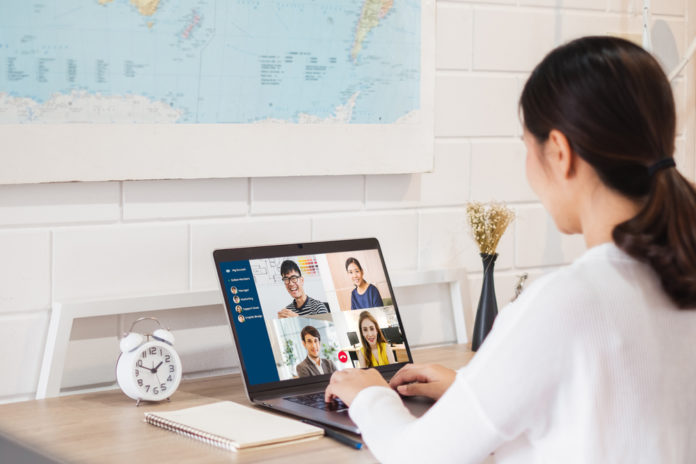Video conferencing has become an everyday tool as a result of the pandemic. The ways we collaborate, meet, present, and communicate have all changed and small business owners in particular are facing many challenges as they are forced to find less traditional ways of running their day to day operations. Everything from navigating the art of remote team collaboration, to creating once outsourced content in-house (quite literally) has been disrupted amidst the health crisis.
At BorrowLenses, we support small businesses. Our video and photography experts, many of whom also run small businesses of their own, have been hard at work creating content that can help small businesses prosper during the pandemic.
Given the recent work from home trend, video conferencing has taken off to a level we’ve never seen before. In fact, Zoom announced back in April 2020 that they surpassed 300 million daily Zoom meeting participants, a huge leap forward from the 10 million daily participants they accounted for only five months earlier in December 2019. With online meetings, virtual classes, and visual presentations being held on a regular basis, everyday professionals from all industries are having to embrace the basic elements of video production as part of their current workday.
While it may not seem like your Zoom call has much in common with a film set, the guiding principles are actually one in the same. Unfortunately, many of these new “Zoomers” are still unsure of how to create a high-quality video presence during team meetings. When team members struggle with their audio and/or their video connections during a meeting, the effectiveness and efficiency of internal and external remote team collaboration is hindered. Luckily, its pretty easy to make your at-home video conference set up work better for you with just a few simple tricks.
We’ve all been there, so here are some tips for looking and sounding your best on a video call with the equipment you, and your employees, already have at home:
- Lighting – it’s everything in video and your camera craves it. Make sure a good light source is present and abundant to take your video quality up a couple of notches. Be sure to avoid backlighting, which is when the primary light source is behind you. Keep in mind that lighting from overhead can cause some harsh shadows so it’s best to have your primary light source in front of you which can reduce shadows, and if your home office space allows for it, add in a secondary fill light to balance out the shadows.
- Audio – quality audio is equally as important as lighting in separating professional vs. amateur video. Make sure you’re always speaking into the direction of your microphone to ensure you are delivering a clear and consistent audio experience for your team, especially when presenting. Consider investing in a USB microphone; it’s one of the few production elements you can’t really replicate with things lying around the house, and it makes a huge difference.
- Background – if you want to incorporate a fancy green screen background, that’s easy to do with a piece of poster board and you can learn more about that in a recent blog we wrote here. But even more simple than that, for limited distractions, you’ll want to set yourself up in front of something plain that won’t cause a lot of distractions such as a blank wall, bricks, or a single piece of simplistic art.
- Framing – study up on “The Rule of Thirds”, photo and video’s guiding principle when it comes to framing. Divide your screen into thirds horizontally and vertically. Try to place your eyes on the top horizontal and in between the two vertical divides. You’ll also want to make sure to distance yourself from the camera so that you’re framed from mid-torso, up. If your camera is low, stack whatever you need to underneath your computer to get your camera up to eye level. Remember, it’s all about eye contact and replicating the in-person look and feel. Overly high placement of the camera won’t exactly convey confidence and the common low placement simply won’t be flattering.
For more tips on how to videoconference like a champ, check out this video I recently produced for our audience. And, if you need help with your work from home setup, or content creation, do not hesitate to reach out to the team at BorrowLenses!
As the video manager for BorrowLenses, Drew Appolonia oversees content creation as well as internal video education. Prior to his current role, Appolonia spent four years as an integral part of BorrowLenses Video Customer Service team, assisting customers with gear selection, education, and troubleshooting. Appolonia sources experience from his time as a multimedia journalist and multimedia content creator for the likes of NBC, Fox, and ESPN affiliates. Additionally, Appolonia freelances as a writer and producer for commercial and indie productions.
Video chat stock photo by Nattakorn_Maneerat/Shutterstock







